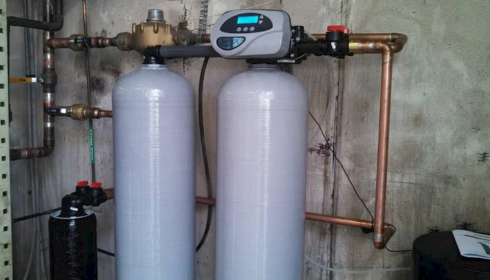When building a house, one of the most crucial stages of construction is framing. Residential framing services form the structural foundation of a home, creating the framework that supports everything from the walls and floors to the roof and ceiling. This phase of construction is not only essential for the safety and durability of a home but also plays a significant role in determining its overall design and aesthetic appeal. In this article, we will explore the various aspects of residential framing services, including their importance, the materials used, the process involved, and what to consider when hiring a framing contractor.
The Role of Framing in Home Construction
Framing is often described as the skeleton of a house. It involves assembling wooden or metal components to create the basic structure of the home, including the load-bearing walls, floor joists, roof trusses, and more.
Structural Integrity: The primary function of framing is to provide structural integrity to the building. Properly executed framing ensures that the home can withstand various environmental forces, such as wind, snow, and seismic activity. This aspect is particularly important in regions prone to extreme weather conditions or earthquakes, where a strong frame is essential for safety.
Design Flexibility:Professionals like LV Design & Build Custom Residential Framing services also offer flexibility in design. The framing phase allows for the customization of various architectural elements, such as room layouts, window and door placements, and roof designs. This flexibility enables homeowners to tailor their homes to their specific needs and preferences, whether they are looking for an open-concept living space, vaulted ceilings, or complex rooflines.
Foundation for Future Work: The framing of a house serves as the foundation for all subsequent construction work. Once the frame is in place, other trades, such as electrical, plumbing, and HVAC, can begin their work. A well-executed frame ensures that these systems are installed correctly and that the overall construction process proceeds smoothly.
Types of Framing Materials
The two most common materials used in framing are wood and steel, each offering distinct advantages depending on the specific needs of the project.
Wood Framing:Conventional construction material is the one that has been in used for many years, especially in North America, in construction of residential framing. It is preferred due to ability in various electrical applications, user friendly and most of all affordable. Woods and frame work means that the home is framed using wood some of these are studs, joists and rafters.
Advantages:
- Cost-Effective:wood is cheaper than steel thus making it more popular with most homeowners.
- Ease of Modification:One of the advantages of wooden frames is the ease with which the structure can be altered in the future with the intention of adding new rooms, or expanding the existing ones.
- Insulation Properties: Wood by its essential nature is very good insulator which will also help to improve the energy efficiency of homes.
- Sustainability:Wood which has been obtained from the sustainably managed forests is renewable which makes the wood friendly to the environment.
Considerations:
- Susceptibility to Pests and Rot:Termites, rot and mold are common problems that affect the wooden frame and this basically threatens the general structure of the frame.
- Fire Risk:Wood is also a combustible material and more measures might be required to avoid fire outbreaks.
Steel Framing: Steel can also be used in home construction and especially with the new trends in construction where architectural designs lean towards the modern and the contemporary. This material is very strong and hard wearing, and is, therefore, suitable for construction in places where the climate is severe.
Advantages:
- Strength and Durability:Steel has unmatched strength and also does not buckle, crack or shrink. It can hold more weight and well suited for open area construction or involving multiple floors. Click here to get more information.
- Pest and Fire Resistance:It does not support growth of termite, rotting or contracting fire and thereby helps to reduce structural problems and increase durability of the home.
- Precision:Steel parts are one of the most precise forms of construction and come in a set standard hence enhancing the standard ways of construction.
- Sustainability:Steel is a recyclable material, and therefore can be considered as being green for homeowners who are looking for environmentally friendly material.
Considerations:
- Cost:Additionally, steel framing is usually costlier to acquire than wood and the cost of construction too is steep.
- Thermal Conductivity:Steel transmits heat far better than wood, hence where insulation is lacking, one is likely to lose heat.
The Residential Framing Process
Framing process is a detailed and time consuming phase of home construction and it is done by well experienced and professional workers. It goes through several key processes and each of them helps in offering the home more fundament and stability.
Design and Planning: In the framing process, there are critical designs and planning that precede the whole process. Specifications are collaborated by architects and engineers who prepare drawings which depict the details of the framing with the intention of having a clear way of how construction is to be done, the proposed percentage of walls that are load bearing, the design of the floors, and the roofs. Such plans have to align to the requirements of the local jurisdiction of the construction in matters concerning architecture and structure.
Material Selection: Once most of the design work is done, the suitable materials are chosen depending on the needs of the project, cost, and weather condition. Wood or steel, the most important factor to consider is the quality of that material when it comes to the construction of the frame.
Site Preparation: Framing cannot take place until the construction site has been cleared which involves: This include the activities of cutting down of trees, tilling, and laying of the initial ground work. Before construction the frame must be put up on a proper leveled surface and therefore the site must be prepared well.
Framing Construction: Implementation of the frame entails putting together all the parts pertaining to the designs for construction of the frame. The joiners, the carpenters and framers utilize the certain equipment like the saws, hammer and the nail-gun in joining the material together. It is important for the workers to work with a high degree of accuracy because small deviations may have bearings on the stability and the alignment of the resultant structure. Visit this site to read more.
Inspection and Adjustment: When the frame is built, every aspect of the frame is reviewed to conform to the set building code and regulation. Works are tweaked to ensure that there are no lacunae or straight callous as it were that require readjustments. This step may take time but it is very essential to give the frame the best look as well as prepare for the next steps of construction like roof installation, sidings, as well as internal cladding.

Conclusion
Residential framing services are the cornerstone of home construction, providing the essential structure that supports and shapes the entire building. Whether you choose wood or steel framing, the quality of the materials and the expertise of the framing contractor are critical to the success of the project. By understanding the framing process and carefully selecting a qualified contractor, homeowners can ensure that their new home is built on a solid foundation that will stand the test of time.
LV Design & Build
6901 Vilitia Cove, Austin, Texas, 78741
+1 (512) 669-8838




























+ There are no comments
Add yours